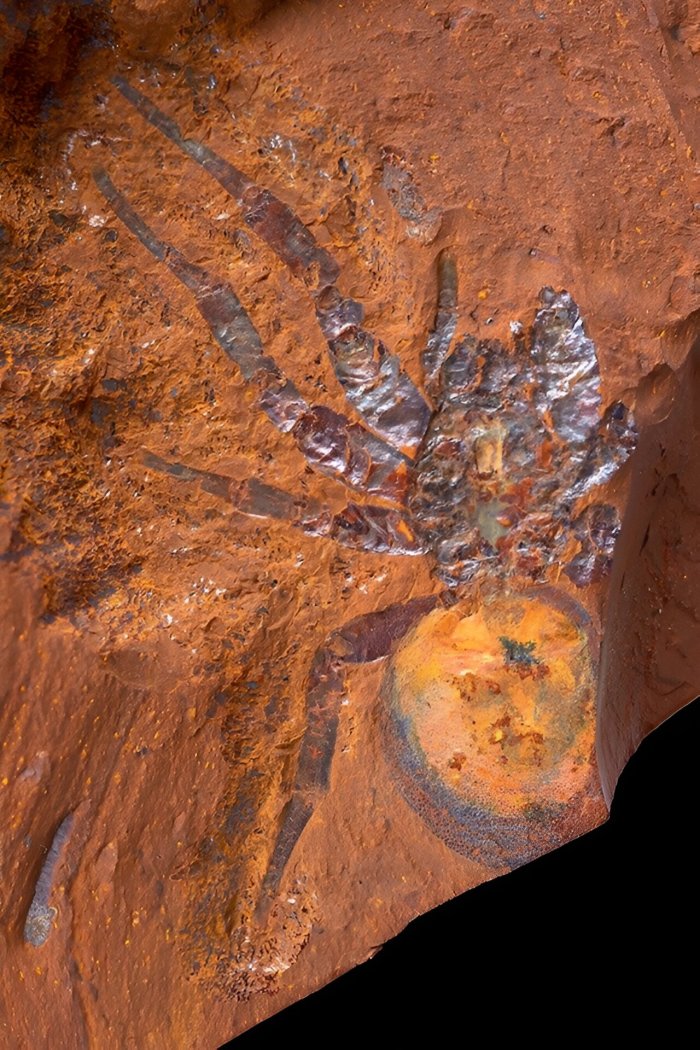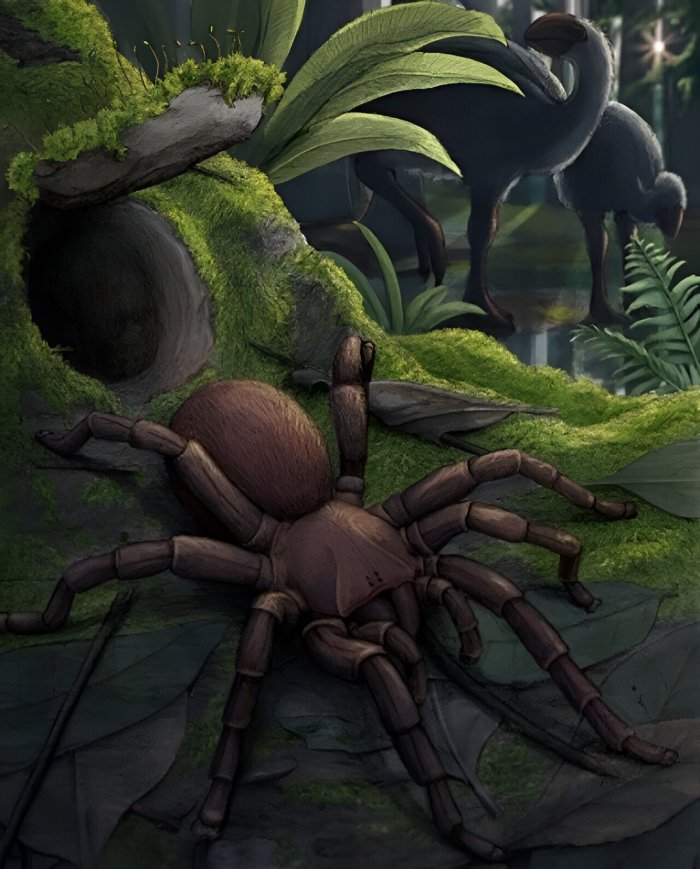Discovered at McGraths Flat, NSW, a fossil site renowned for its iron-rich rock known as “goethite,” researchers have unearthed a new genus of spider, marking the first-ever spider fossil from the Barychelidae family.
Led by Australian Museum (AM) and University of New South Wales (UNSW) paleontologist Dr. Matthew McCurry, the team formally identified and described the fossil spider as Megamonodontium mccluskyi, dating back approximately 11–16 million years.

Credit: Australian Museum
Resembling the living genus Monodontium (a brushed trapdoor spider) but substantially larger, the spider was christened after Dr. Simon McClusky, who initially discovered the specimen. As a geospatial scientist in Canberra, McClusky dedicates his time to assisting paleontological excavations.
Distinguishing itself from its putative sister genus Monodontium, Megamonodontium exhibits an asymmetrical carapace shape, widest in the posterior third, and is approximately five times larger than known Monodontium specimens.
Dr. McCurry emphasized the rarity of finding fossil spiders in Australia, underscoring the significance of this discovery. With only four spider fossils previously recorded across the continent, this finding provides crucial insights into spider evolution and fills a significant gap in scientific understanding.
The closest living relative of Megamonodontium currently inhabits wet forests stretching from Singapore to Papua New Guinea, suggesting that similar environments once existed in mainland Australia before the species became extinct as the continent became more arid.
Dr. Robert Raven, arachnologist at the Queensland Museum and the study’s lead author, highlighted the exceptional size of this fossil spider, noting its distinction as both Australia’s largest fossilized spider and the first fossil from the Barychelidae family worldwide.

Credit: Australian Museum
Stacking micropH๏τography conducted by University of Canberra Associate Professor Michael Frese revealed remarkable levels of detail in the fossils from McGraths Flat. Scanning electron microscopy enabled the examination of minute structures such as claws, setae on the spider’s pedipalps, legs, and the main body, shedding light on their functions in ancient spider anatomy.
The fossil is now housed within the AM’s paleontology collection and is accessible online for further research. The findings were published in the Zoological Journal of the Linnean Society.